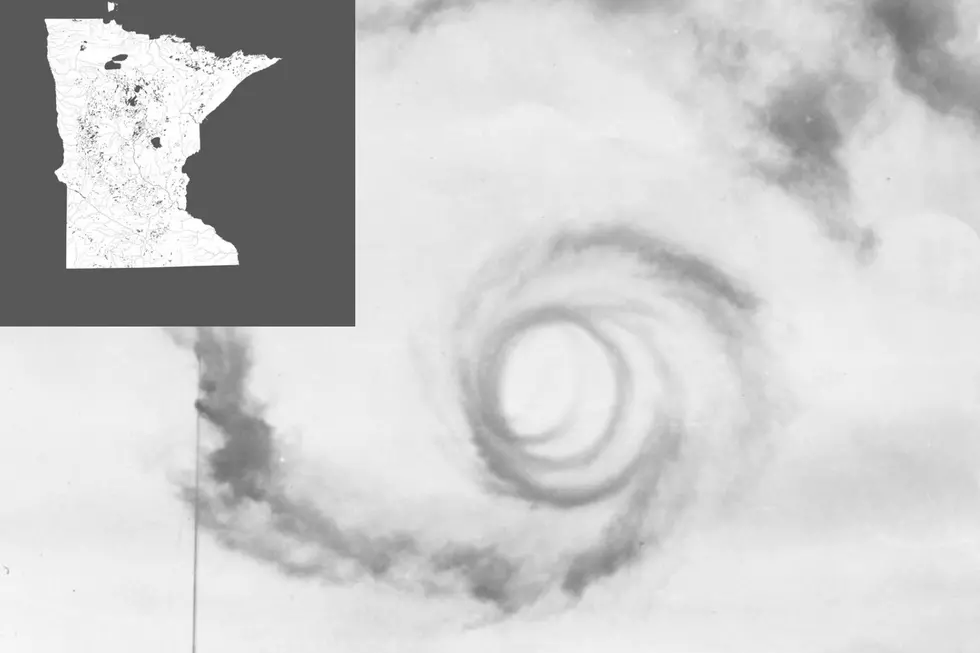
What Can Minnesotans Expect from Tornado Season This Year?
Minnesota residents are split on a couple of things: where up north begins and if they have enjoyed this unseasonable winter weather.

No matter if you love or hate the winter we’ve had, there’s no denying that it’s been abnormal.
This is the first winter my wife and I have been Minnesota residents since moving from North Carolina in September, and quite frequently someone reminds me regularly the winter we’ve had isn’t typical for Minnesota.
Most people from other parts of the country who’ve never been here equate Minnesota with only Snow and Cold. So, I was surprised to learn about the tornado dangers here.
I saw something last week that I dug into a little more talking about “Tornado Alley” which of course is dubbed the most common areas for Tornados to occur.
I reached out Aaron Treadway with the National Weather Service with some questions, starting with where the heck is “Tornado Alley” anyway?
Aaron says that it is typically thought of as the Central Plains extending from Texas north into the Dakotas. But over the last few years a focus has also been put on the Southeast in the United States as well. He also says that tornados are more common East of the Rocky Mountains because the abundant moisture that is pulled north from the Gulf of Mexico ahead of larger weather systems.
Tornados can develop in any state at any point, but the more common times are in the spring in the Southeast and then as we move into the early summer, these dangerous weather events become more common in the Northern Plains.
This map from the Storm Prediction Center shows Minnesota with a higher number of average tornados each year than the states that are our neighbors except Iowa.
Aaron says tornados need 4 ingredients to form, moisture like we referenced earlier, lift (something which allows the storm to grow), instability (which is the fuel for the storm) and then wind shear. Wind shear is a key component because it helps storms maintain their strength.
While it’s possible for forecasters to get an idea that conditions could be likely for a tornado to form in the coming days, it’s hard to predict in some situations. The Store Prediction Center offers conservative forecasts 8 days in advance.
Knowing that it’s hard to predict what may happen, you are urged to stay prepared for possible tornados by forming a plan which includes emergency supplies, knowing where you will go at home and work if a tornado forms, and how you will communicate with friends and family.
Aaron Treadway also reminds us about the terminology that could help save our lives in the event these words are needed to be used. A tornado watch means that a tornado could be possible. Conditions are favorable for at least the possibility. This is a good time to make sure everyone knows the plan you’ve put together.
A tornado warning is issued when one is about to happen, and you must act to keep you and your family safe.
What to do if a tornado hits:
If you are at home or at work, move to an area that is in the interior part of the building with no windows. If you can move to a lower floor, that’s advisable.
If you are driving when a tornado hits, try to find the best possible shelter that doesn’t leave you exposed to the storm. National Weather Service officials say that taking shelter under an overpass doesn’t offer you safety from a tornado.
Hopefully this information is a good reminder for you about the upcoming threat we can face this year and you’ll be able to get prepared if or when the time comes to implement that plan.
Minnesota's Ten Tallest Buildings
More From 98.1 Minnesota's New Country



![Have You Seen All Of Minnesota’s License Plate Options? [GALLERY]](http://townsquare.media/site/150/files/2021/01/Image-of-pollinator-plate-2.jpg?w=980&q=75)





